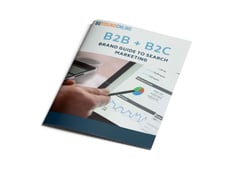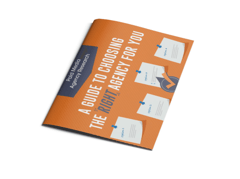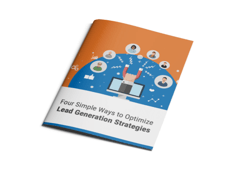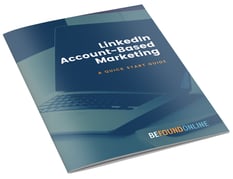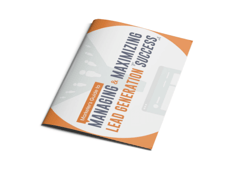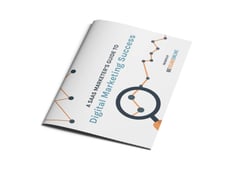
Updated: May 5th, 2025
If you’ve been in SEO for a while, you’ve probably had to wrangle a site migration—or at least clean up the mess from one. Maybe it was a domain switch, a full redesign, a CMS change, or just a big URL restructure. Whatever the case, you already know: migrations can be a make-or-break moment for organic performance.
URL restructure. Whatever the case, you already know: migrations can be a make-or-break moment for organic performance.
Done right, they’re a chance to level up your SEO and boost long-term growth. Done wrong? Well...traffic tanks, rankings drop, and suddenly everyone’s looking at you.
Whether you're planning a migration now or just want to be ready for the next one, this updated 2025 guide has you covered—from prep to post-launch and everything in between.
Understand the SEO Stakes of a Site Migration
A site migration (especially one that involves switching domains) is way more than just a backend project. It’s a big deal for SEO, and Google treats it like one. Even if your new site looks the same and has the same content, Google often sees it as a totally different site. That means your rankings, backlinks, and indexing all have to be reprocessed, which can take time.
different site. That means your rankings, backlinks, and indexing all have to be reprocessed, which can take time.
So don’t panic if you see a dip in organic traffic or keyword rankings right after launch. Some pages might temporarily disappear from search results, and conversion rates can drop too—especially if there are changes to speed or user experience.
The good news? If you stick to best practices and handle the migration thoughtfully, your site will recover—and could even perform better than before. It’s all about staying ahead of the curve and managing the details.
Pre-Migration Planning: The SEO Checklist
Prepping for launch is where most of the SEO heavy lifting happens. The more thorough your groundwork, the smoother your recovery.
Create SEO-Friendly URLs
URL structure is a foundational element of SEO. Clean, descriptive URLs can improve CTR, crawlability, and user trust.
Best practices:
- Keep them short, readable, and keyword-rich: /collections/water-pitchers is better than /cat123?id=8734&type=filters.
- Avoid dynamic parameters unless absolutely necessary.
- Use hyphens (-), not underscores (_). Google recognizes hyphens as word separators.
- Stick to subfolders (example.com/shop) over subdomains (shop.example.com) unless technically required. Subdomains dilute domain authority.
If you're migrating an e-commerce site, group similar products into logical collections and avoid including session IDs or unnecessary query strings in canonical URLs.
Map 301 Redirects from Old to New URLs
Redirects are the single most important technical step in an SEO migration.
Why 301s matter:
- They signal permanent change, transferring 90–99% of link equity.
- They help preserve search engine rankings.
- They guide users to the correct destination, improving UX.
How to do it right:
- Build a 1-to-1 redirect map: Match each old URL with the most relevant new page.
- Avoid redirecting everything to the homepage—it kills SEO signals.
- Audit for redirect chains or loops, which hurt performance and crawlability.
- Include URLs for category pages, product pages, blogs, and even old image paths.
Test your map in staging and fix any broken or misaligned links before launch.
Create SEO Baseline Reports
You can't manage what you don't measure.
Before launch:
- Pull 12 months of data for key SEO and business metrics:
- Organic traffic by page, engine, and device
- Keyword rankings by page and intent
- Revenue and conversion data (if e-commerce or lead-gen)
- Inbound links and referring domains
- Index coverage (indexed pages, crawl errors)
- Visualize seasonality trends to set realistic post-launch expectations.
- Tag priority pages (top traffic/revenue drivers) and monitor them more closely during rollout.
After launch, compare against your baseline weekly, then monthly. This is how you'll know if recovery is working or if something broke.
Preserve High-Performing Content and Metadata
One of the biggest SEO mistakes during a migration is letting great content get lost, deleted, or overwritten.
Here’s how you can preserve content strength:
- Identify top-performing pages using traffic, backlinks, and rankings.
- Retain or adapt core content—don’t rewrite just for the sake of it.
- Migrate existing metadata: titles, meta descriptions, H1s, and structured data.
- Use consistent keyword targeting across both old and new content.
Even design changes can hurt SEO if they bury important text or remove internal links. Collaborate closely with devs and designers to balance UX with content visibility.
Update Internal Linking & Backlinks
Internal links are your site's roadmap. If they still point to old URLs, it wastes crawl budget and adds redirect hops.
How to fix internal linking:
- Run a full crawl using Screaming Frog or Sitebulb.
- Replace links to old URLs with direct links to the new destination.
- Update header/footer/nav menus and contextual links.
- Don’t forget canonical tags—they should reflect new URLs.
For backlinks:
- Prioritize outreach to update high-authority referring domains (especially .edu, .gov, and major publishers).
- Use tools like Ahrefs, Majestic, or SEMrush to identify link sources and contact webmasters.
Optimize for Speed, Mobile, & UX
If your new site isn't fast, mobile-friendly, and well-structured, don't expect rankings to magically bounce back.
Areas to focus on:
- Core Web Vitals: Aim for green scores across Largest Contentful Paint, First Input Delay, and Cumulative Layout Shift.
- Mobile-first design: Ensure every element is usable and readable on smaller screens.
- Navigation: Clear, shallow site architecture helps crawlers and users alike.
- Compress images, minify code, use lazy loading, and leverage CDNs to maintain speed.
Search engines prioritize user experience more than ever, so the smoother and faster your site performs, the better your chances of a strong post-migration recovery.
Don't Delete Vital Tags or Tracking Code
New site ≠ new rules. Your SEO and analytics setup needs to migrate, too.
Common elements that get wiped:
- Canonical tags
- Structured data (schema)
- Pagination tags (rel="next"/prev)
- Meta robots tags
- Analytics tracking (GA4, GTM)
- Facebook/Meta pixels or ad tracking
To avoid surprises post-launch, build a solid QA checklist and double-check that everything is still in place before you flip the switch.
Submit Updated XML Sitemap & Robots.txt
Once your new site is live, it’s time for a little post-launch SEO cleanup to help search engines find and understand your updated structure.
Post-launch housekeeping:
- Generate an XML sitemap with only canonical, indexable URLs.
- Submit in Google Search Console and Bing Webmaster Tools.
- Check robots.txt for disallow rules that may block key pages.
- Add your XML sitemap reference in robots.txt.
And if you’re migrating to a new domain, be sure to use Google’s Change of Address tool—it’s a simple but crucial step to let Google know what’s happening.
Create a Proper 404 Page
Even with the best redirect plan, some traffic will hit non-existent URLs.
Your 404 page should:
- Use a clear “Page Not Found” message
- Offer suggestions for navigation (menus, search bar, CTAs)
- Return a real 404 HTTP status (not 200 or 302!)
Bonus: Track your 404s in GA or GSC to identify missed redirect opportunities post-launch.
Should You Redirect Immediately or Wait?
When planning a domain migration, there are two main approaches to consider—each with its own pros, cons, and use cases.
Option 1: Redirect Upon Launch (Recommended)
If the new site is fully optimized, redirecting the old domain to the new one at launch is usually the best move. This method helps preserve SEO equity from day one and prevents keyword cannibalization between old and new content.
preserve SEO equity from day one and prevents keyword cannibalization between old and new content.
It also creates a smoother experience for users and signals to Google that the new site should be treated as the main authority moving forward. This approach is ideal when QA is complete, content and metadata match, and all redirects have been carefully mapped and tested.
Option 2: Delay Redirects (Use Cautiously)
If the new site isn’t quite ready (maybe it still has bugs or missing content), you might decide to hold off on redirecting the old site right away. Letting the new site go live first allows Google to start crawling and indexing it on its own.
This can help reduce early traffic drops and give your team more time to fix things. But keeping both the old and new sites live for too long can hurt your SEO. It can confuse search engines, split your rankings, and weaken your authority.
If you do delay the redirects, keep it short—ideally just two to four weeks—and have a solid plan to complete the redirect as soon as the new site is ready to go.
Post-Migration Monitoring: What to Watch
Once the switch is flipped, your work isn't done.
Monitor:
- Google Search Console for crawl errors, indexing drops, and redirect issues
- Google Analytics 4 & Looker Studio dashboards for traffic and engagement trends
- Keyword trackers (like STAT or SEMrush) for visibility changes
- 404 logs and server errors for broken paths
- Page speed tests and Core Web Vitals metrics for performance issues
Set alerts for major traffic or ranking shifts, and act quickly if performance tanks.
Site Migrations Are Tricky. Good Thing You Know People.
Site migrations can feel overwhelming—even a little terrifying. But with the right plan and support, they don’t have to be.
Whether you’re moving to a new domain, launching a rebranded site, or just cleaning up your URL structure, these best practices can help protect your hard-earned SEO equity and set the stage for long-term growth.
Contact Us!

Jon Pappas
Jonathon is the Director of Organic Search at BFO. He’s a reliable and consistent member of our team and is very detail-oriented and client-focused.
CATEGORIES
SUBSCRIBE TO OUR BLOG
Stay up to date with the latest industry best practices in digital marketing!










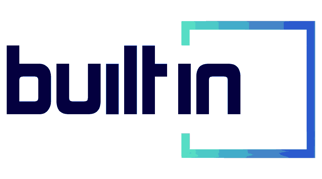



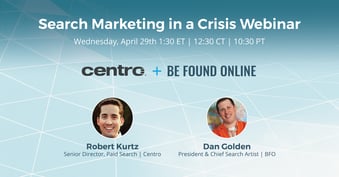


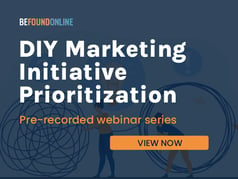





.png?width=339&height=179&name=Webinar%20Banner%20(1).png)

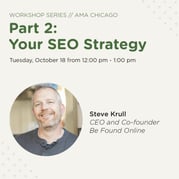

.png?width=339&height=179&name=July%20Webinar%20(Newsletter).png)

.png?width=339&height=179&name=Webinar%20Banner-April-02%20(1).png)
%20(4).png?width=339&height=179&name=Webinar%20Banner-May-02%20(1)%20(4).png)

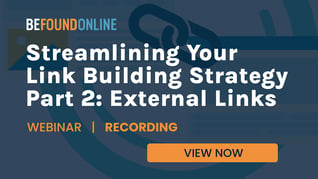


.png?width=339&height=179&name=March%202023%20Webinar%20Ad%20(autoresponder).png)


